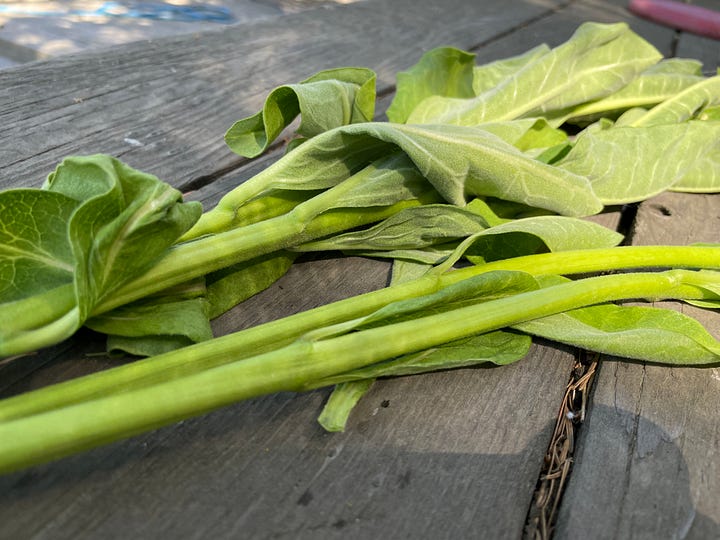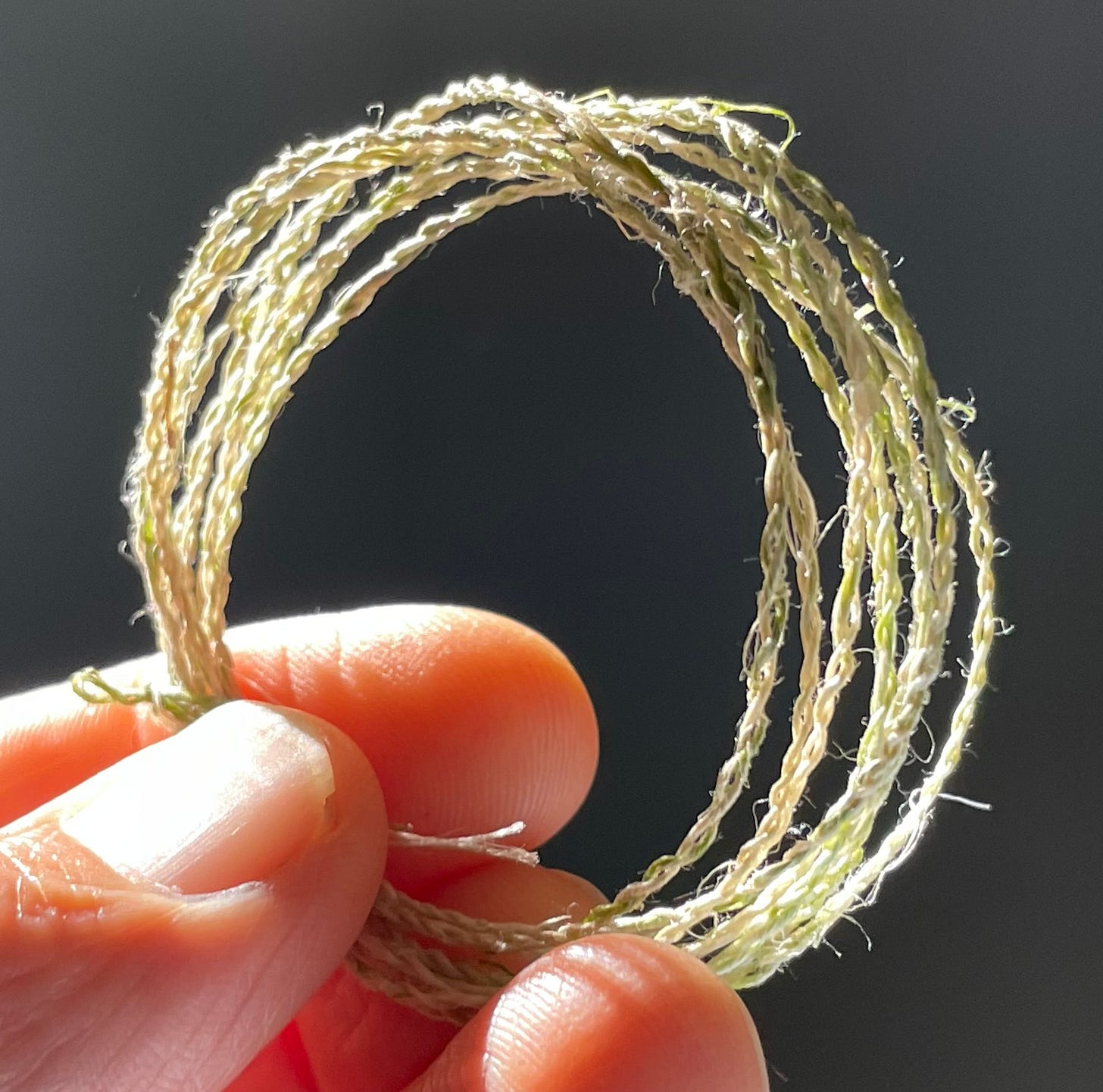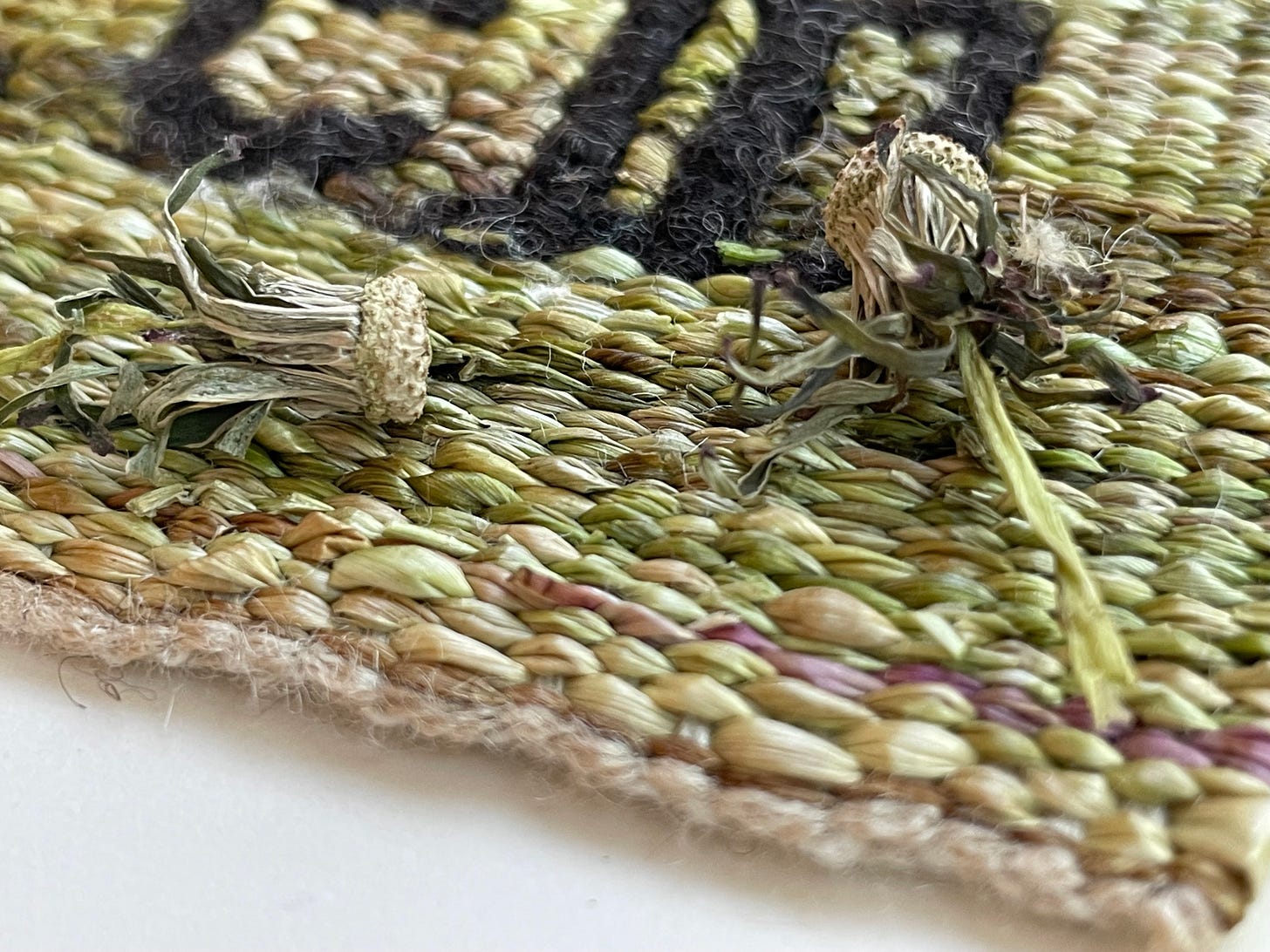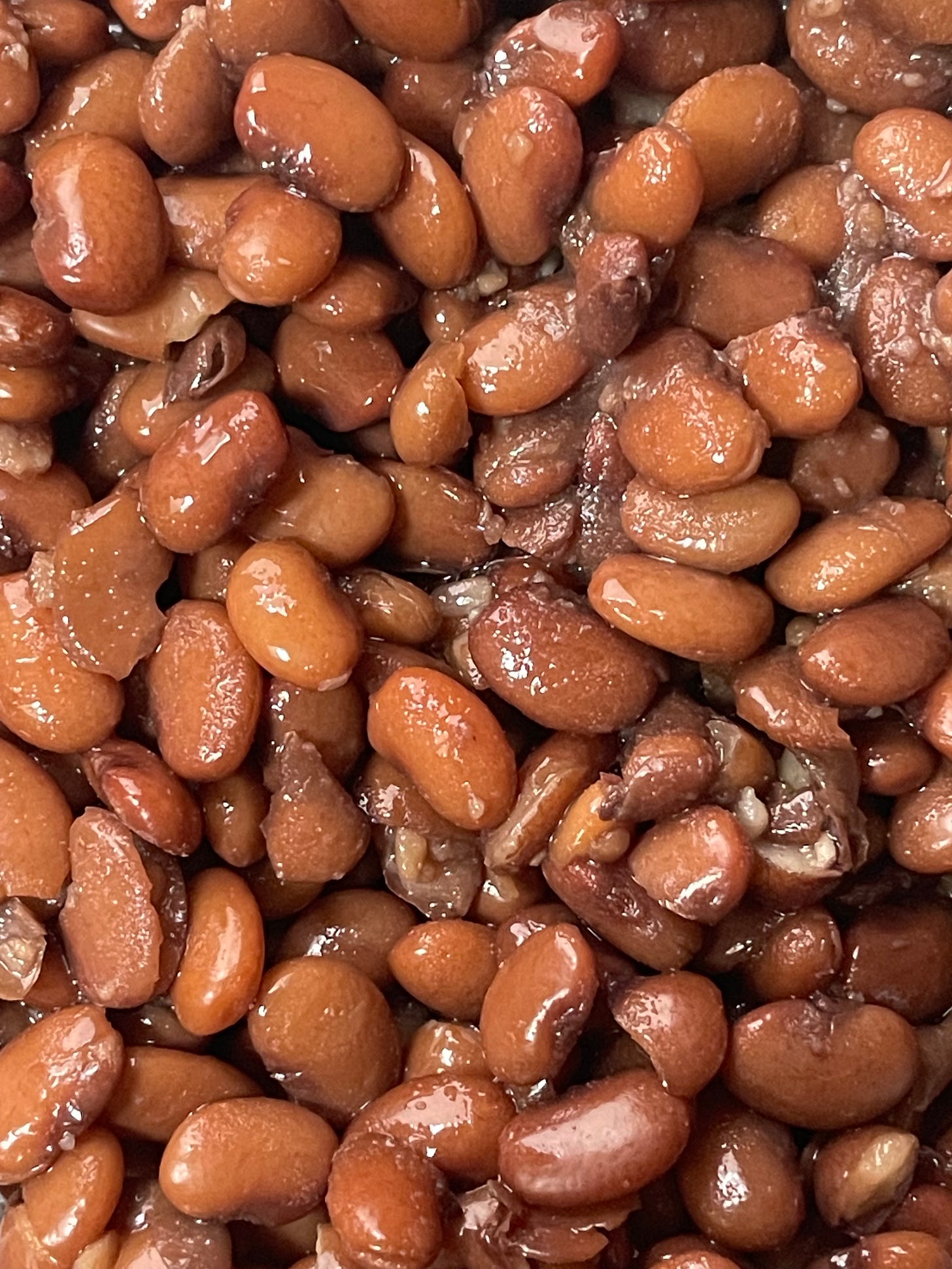This morning I learned that it takes longer to cook brown tepary beans1 to tender deliciousness—

—than to twist the fiber from seven stalks of very young Milkweed into cordage.2




Both are compelling measurements of time— though the beans cook themselves (assuming an electric stove rather than a fire that needs tending)—
—and the fibers wait without changing (at least in a way I can see), until I pick them up and begin.
I also learned that I’d rather work with Milkweed than Dandelion stems—even when the fibers of the former are short, fine and fragile, and the latter plentiful and robust.
Actually I was equally enthusiastic about both to begin with. How not to be curious about exuberant plants growing right in front of my nose? It doesn’t take much for me to believe things are weaveable and how not to be as charmed by dandelions as, say, by used coffee filters? Anyway, the leggy wonders seemed full of potential and I’ll try almost anything in a warp3 —even when the first few passes make it clear that I’ve perhaps not made the best choice.


To be sure, a wider sett4 would have made the weaving easier. Or finer Dandelions. But the long thick stems came in one size and were only usable whole. Split, they lost whatever strength they once had. We’re also having a very dry spring, so even though I kept the stems wrapped in a wet cloth until I was ready, they grew brittle even as I tucked them into the shed, shredding and kinking (vs bending), as I formed the little shapes inside the ‘e’ and ‘s’ and ‘m’.
To accommodate this I made the ‘m’ lopsided—weaving two warps into the inside of the right gap when the first single warp wrap proved unrepeatably awkward—and that was better, though in retrospect I wish I’d woven both gaps with two warps. But you know what they say about hindsight.
And naturally I didn’t weave a sample—unless this little tapestry was the sample (it was certainly a learning experience), in which case it still required more hand strength than I like in a material/medium combination.
Now it is perfectly possible that I would have felt more kindly toward the stems had I chosen to weave a landscape— might even now be merrily rendering hills and fields with all those subtle greens and browns. And what’s not to love about that bit of purple! But no. I chose to manipulate the stems into letter forms that didn't suit them, forms replete with curvy shapes— and then rudely blame the materials for my lack of foresight and attention.
Except— how not to weave the word stem with stems? Oh, the dilemmas.
Still, I’m glad I did it. Having one less item on the internal “longing to try one of these days” list is always a fine thing. Indeed in a certain light it might appear that I made it extra hard on purpose to clear the decks and make room for other flirtations. My creative brain does work that way sometimes: unable to just say no, I set up a situation that won’t work and force the no anyway. Passive-aggressive, effective and unnecessary—if also weirdly compelling.
Anyway it’s all a useful reminder that not every idea needs to manifest in the physical world— and I’m pretty sure the dandelions don’t care either way. With or without my interference, they will keep doing what they do best: making cheerful yellow flowers in spring, offering themselves as a source of food should a person want to try some pickled buds or steamed crowns, and staying soft and green without water all through the hot dry summers— allowing me to walk barefoot in comfort when grasses have gone crisp and brown.
The difficulty is that watered or not, my idea garden is as robust and exuberant as any field of dandelions or established milkweed patch. And despite what I said last week about not starting things just to keep the project-finishing itches away,5 I am obviously as susceptible as ever to flirtatious possibilities making eyes at me from across the room. For along with the stems and stalks, the paper quills of wool in the photo above also proved irresistible.
But the tale of how they propositioned me—and how I responded—will have to wait until next week. Substack is once again telling me I’m nearing the email limit length and I’ve not yet had a chance to brag about the magnificence of Beryl.
And could I possibly send this to you without a little canine adulation?
Not a chance. For as you can probably tell from the comics, I keep being delighted and amazed by how pleasant it is to have a sidekick—especially a smart, cuddly, attached creature (Blue Heelers are notorious for being velcro dogs). She is ready to go (almost) anywhere as long as we’re together, and will not howl, run away, or even protest when I spend the better part of an evening playing tunes in the park with friends. (Concertinas aside, fiddles and penny whistles are not every dog’s favorite).
Ok, she will sigh and nudge me a bit if we play on past our usual bedtime or, indeed, if I keep typing when the beans have cooked themselves to delicious tenderness—
—but that’s only sensible, right?
She is a most excellent comrade.
My friend Rochelle gave me some brown, black and white Tepary beans from Ramona Farms the other day, and I’ve been experimenting. So far the white are my favorite though the brown (just tasted), are differently delicious. I’m only only in the first round of what I trust will be many a future experiment.
And for the record, it takes quite a bit longer to write The Gusset than to cook the beans.
To be clear, this is not a good time to gather milkweed fiber. The stems are still growing so the fibers are short, fine, scarce and relatively weak. Also the last thing I want to do is deprive a single Monarch Butterfly of ki’s food. But an established milkweed patch can be an exuberant thing. The plants spread both via seeds and rhizomes (forming colonies), and this colony has been busy expanding its way into clumps of penstemons and other native plants who also need their space—so a little judicious thinning was in order. And who am I to say no to plants otherwise destined for the compost pile?
It also might behoove me to try the Dandelions in something a little more freeform, or at least less dependent on the restrictions imposed by weaving at a particular sett. Something more akin to Alice Fox’s dandelion braiding perhaps. Or some basketry technique or other. Oh dear — now I’m curious again. Sheesh. The world is just so interesting, isn’t it? So many ways to broaden my mind and my practice, right here.
Out of habit I set my Fringeless warp at 8 epi and I think 7 or even 6 would have made the weaving more pleasant.
It was marvelous to read, think about and discuss all your lovely observations, ideas and thoughts last week —be it about Dan’s ashes or the singleton/diptych/triptych/familial possibilities of the coffee filter tapestries. Exploring ideas with smart and curious people is just so compelling. Thank you for chiming in.


















So many shiny ideas! And the perfect pup
Oh, btw, love how the dandelions look woven. So many beautiful shades of green, browns and purples. A treat for the eyes!